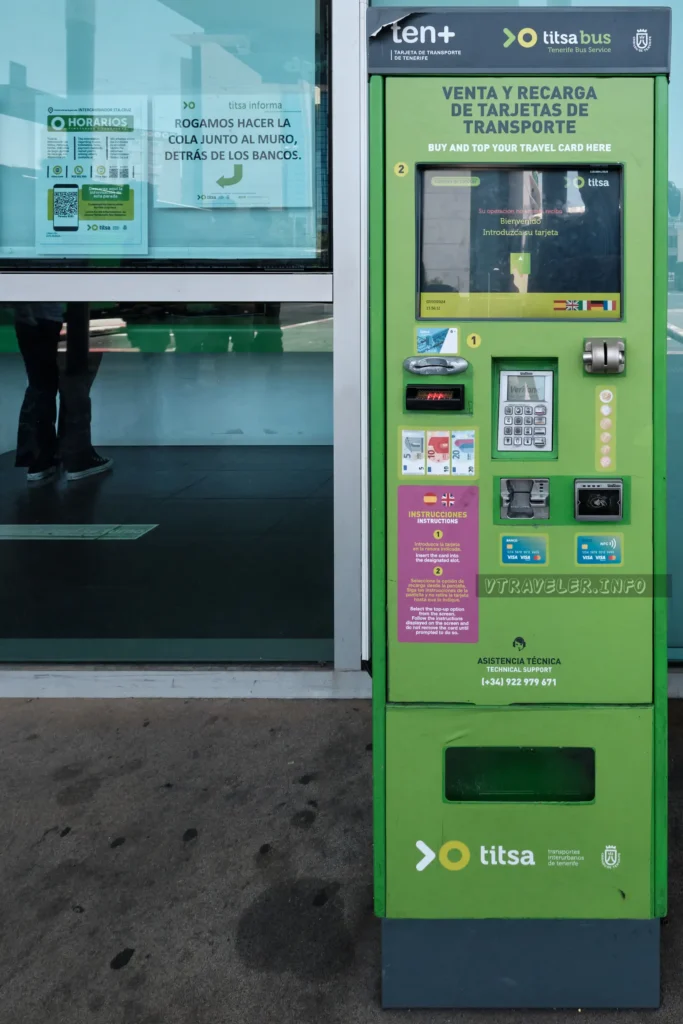Buses
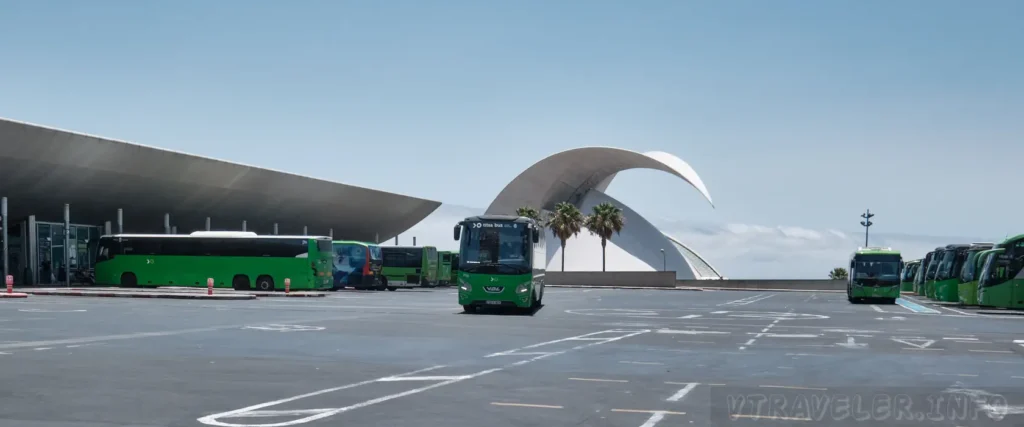
Tenerife, known for its breathtaking beauty among the Canary Islands, attracts millions of tourists every year due to its striking landscapes, volcanic formations and rich culture. For many travelers, the bus becomes the ideal means of transportation around the island, as it is not only economical, but also allows you to fully immerse yourself in the local vistas in comfort. In this article, we will provide a comprehensive guide to the bus system of TITSA, the main carrier in Tenerife. You will learn how easy and convenient it is to get to the main attractions, which tickets to buy and which routes to choose so that your trip leaves a vivid impression.
Overview of TITSA
TITSA (Transportes Interurbanos de Tenerife, S.A.) is the main operator of ground passenger transportation in Tenerife, serving more than 60 million passengers a year with a fleet of around 600 buses. Founded in 1978, the company has come a long way from the first gasoline bus, introduced in 1904, to modern buses with USB ports and Wi-Fi internet connection.
TITSA offers a variety of services adapted to the needs of a wide audience. TITSA buses are equipped with modern amenities such as air conditioning, access for people with disabilities, and GPS systems to accurately track routes in real time. This ensures passenger comfort and convenience, which is especially important in the island’s hot climate.
In addition, the company actively adopts innovative technologies and sustainable practices, such as the use of alternative fuel buses, to minimize the environmental footprint of its operations. TITSA has begun the transition to electric buses, a significant step towards sustainable public transportation in Tenerife.
An important part of TITSA’s work is the constant renewal and modernization of its fleet and infrastructure to meet the increasing demands of the island’s residents and visitors. With convenient and frequent services, TITSA ensures accessibility to all major tourist and historical sites in Tenerife, making traveling around the island easy and enjoyable.
How to use buses in Tenerife
The basics of using TITSA buses: TITSA buses, known in Tenerife as “guaguas”, serve the entire island, providing access to major attractions and neighborhoods. For the convenience of travelers, both single tickets and travel cards (such as the Ten+ Card) are available for purchase at vending machines or company offices.
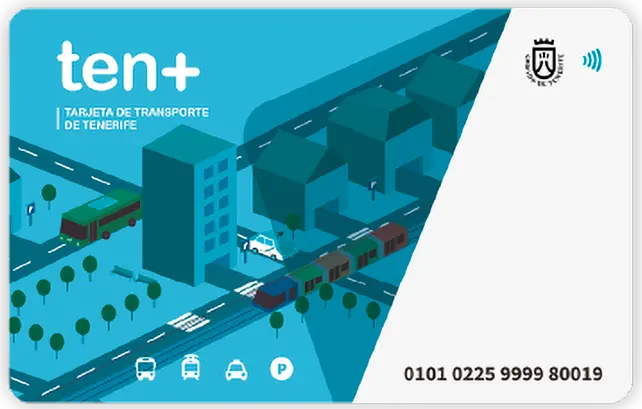
Travel cards and tickets: the Ten+ Card and the “1 Day Travel Card” or “7 Day Travel Card” are popular choices as they allow for unlimited travel in a single day or week. To purchase and refill the card, you can use the machines at train stations or through the Ten+ Móvil mobile app, available for Android and iOS devices. When using the card, you must hold it against the reader when entering and exiting the bus.

Mobile app: The Ten+ Móvil app allows you to buy tickets and track routes in real time. It provides detailed information on bus routes and timetables, and allows you to find the nearest stops based on your location.
Trip Planning: An interactive map is available on the TITSA website to help you plan your trip, showing all available routes and connections between different parts of the island. This is especially important for longer trips that may require connections.
Payment features: Fare payments can be made either in cash directly from the driver or via mobile payments in the app. For those who plan to use public transportation frequently, the purchase of a reusable reloadable card is recommended, which provides better control over transportation costs.
Tips for using buses in Tenerife
- Buying and recharging your card: Start by buying a Ten+ Card at one of TITSA’s vending machines or offices, which will save you money when traveling around the island.
- Use the app for convenience: Download the Ten+ Móvil mobile app to purchase tickets and track your schedule in real time.
- Route Planning: Use the interactive map on the TITSA website to plan your route, especially if you plan to visit remote attractions.
- Route monitoring: Keep track of route and stop information in the app to avoid confusion and avoid missing a necessary stop.
Approximate bus fare – 2024
| № | From | To | Price | Ten+ |
|---|---|---|---|---|
| 40 | Costa Adeje | Tenerife South Airport | 3,70€ | 2,90€ |
| 343 | Costa Adeje | Tenerife North Airport | 12,40€ | 8,90€ |
| 343 | Costa Adeje | Puerto de La Cruz | 14,60€ | 9,60€ |
| 111 | Los Cristianos | Santa Cruz de Tenerife | 9,00€ | 5,90€ |
| 343 | Puerto de La Cruz | Tenerife South Airport | 13,55€ | 9,55€ |
| 343 | Puerto de La Cruz | Tenerife North Airport | 4,75€ | 3,40€ |
Ten+ Móvil
Popular routes and attractions in Tenerife
TITSA’s main routes: Using TITSA buses, travelers can explore the diverse corners of Tenerife. For example, routes connecting major tourist centers such as Puerto de la Cruz, La Orotava, San Cristobal de La Launa, Garachico, Santa Cruz de Tenerife, Los Cristianos and Costa Adeje are particularly popular with tourists.
Attractions along the routes: There are many famous attractions along these routes. For example:
- Loro Parque (buy a ticket) in Puerto de la Cruz, known for its exotic animals and shows featuring orcas and dolphins.
- Teide National Park (book a bus tour) , accessible by bus №342 from the south or №348 from the north, offers magnificent scenery and the opportunity to take a cable car to the top of Teide Volcano.
- The historic center of La Laguna or Santa Cruz and its museums, markets and architectural monuments.
- Siam Park (buy a ticket) – water park in Costa Adeje
Specialized tourist routes: TITSA also offers special tourist routes, such as routes to popular beaches or through picturesque villages. These itineraries are ideal for those who wish to explore Tenerife’s cultural heritage and natural beauty.
Travel tips: When planning to travel on these routes, it is recommended to check the bus schedules on the official TITSA website in advance to maximize your travel time. Also remember to check the opening times of attractions to avoid unforeseen circumstances.
Importance of mobile apps and information maps
For the convenience of travelers, TITSA offers a mobile app through which you can access up-to-date schedules, purchase tickets, and even view an interactive route map. It’s also worth taking advantage of the route maps available at tourist information centers and many bus stations.
Tips for traveling by bus in Tenerife
- Pre-trip planning: Before traveling by bus in Tenerife, it is important to plan your itinerary in advance. Use the official TITSA website to view schedules and routes. This will help you optimize your travel time and avoid waiting at stops.
- Using the Ten+ card: Purchasing a Ten+ transportation card will make traveling around the island easier. The card not only saves you money on fares, but also eliminates the need to carry cash to pay your fare every time you travel.
- Ten+ Móvil mobile app: Download and use the Ten+ Móvil mobile app to buy tickets and track your routes in real time. It’s a convenient way to keep up to date with changes in bus schedules and routes.
- Travel times: Try to avoid traveling during peak hours, when buses can be crowded. Planning your trips during quieter hours of the day will ensure a more comfortable and enjoyable journey.
- Prepare for your trip: As many bus stops in Tenerife do not have weather protection, it is advisable to bring sunscreen and water, especially on hot days. It is also handy to bring light clothing and a hat for sun protection.
- Safety and comfort: Always keep an eye on your personal belongings and keep your luggage in sight. Keep valuables out of reach, especially on crowded buses.
- Communicating with drivers and locals: Do not hesitate to ask the bus driver or locals for help if you need directions or other information. Most people in Tenerife are friendly and eager to help tourists.
- Respect for local customs and culture: Remember that you are in a foreign country and should respect local traditions and customs, including rules of behavior in public places and transportation.
These tips will help you avoid common mistakes and make your bus journey in Tenerife as pleasant and safe as possible.
How to get to Tenerife’s airports by bus: TITSA’s Route Guide
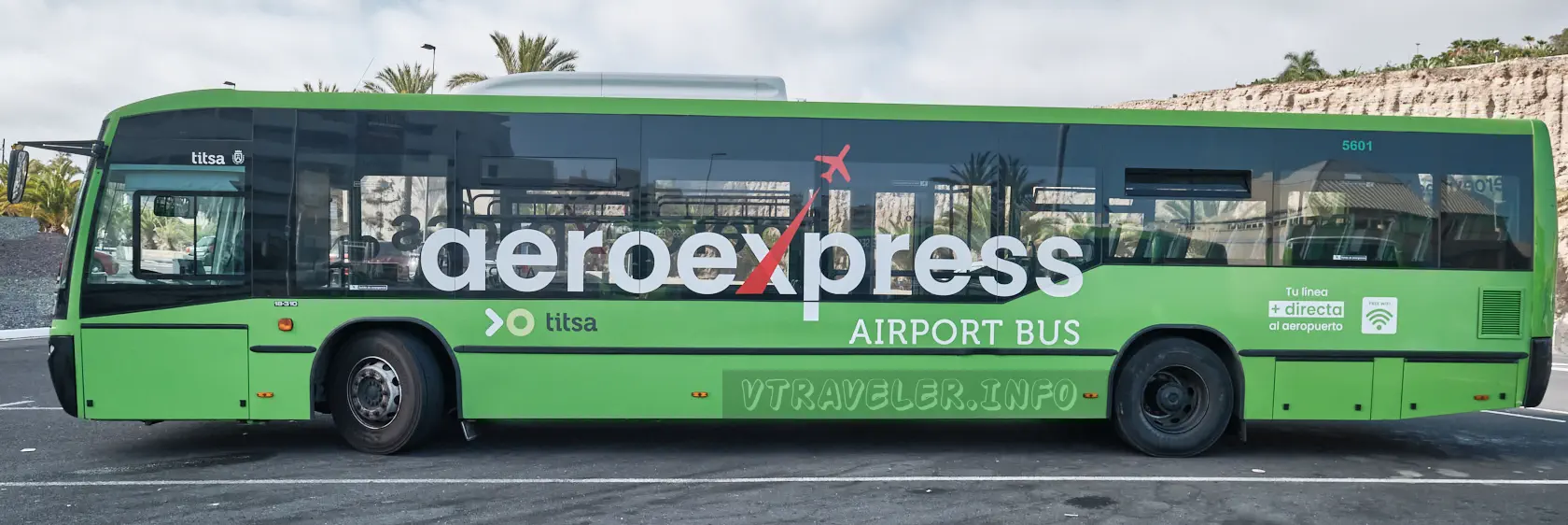
Getting to Tenerife’s South and North airports by public transportation is made easy with TITSA’s routes. This is the ideal choice for travelers seeking comfort and economy.
Access to Reina Sofia South Airport (TFS):
- TITSA bus routes: №10, №40, №711, №343, №415.
- Features: These routes connect the airport to major resorts and cities, providing efficient and convenient connections.
Access to Los Rodeos North Airport (TFN):
- TITSA bus routes: №20, №30, №343.
- Key Connection Points: Santa Cruz, Puerto de la Cruz.
- Benefits: Routes provide quick and direct connections to the island’s most important hubs.
Benefits of using TITSA buses to travel to airports:
- Savings: Significantly cheaper than cabs or renting a car.
- Convenience: Frequent flights and convenient schedules make it easy to plan trips.
- Environmental Friendliness: Reduces your carbon footprint by using public transportation.
These routes are ideal for both tourists and locals looking for reliable and comfortable access to Tenerife’s airports.
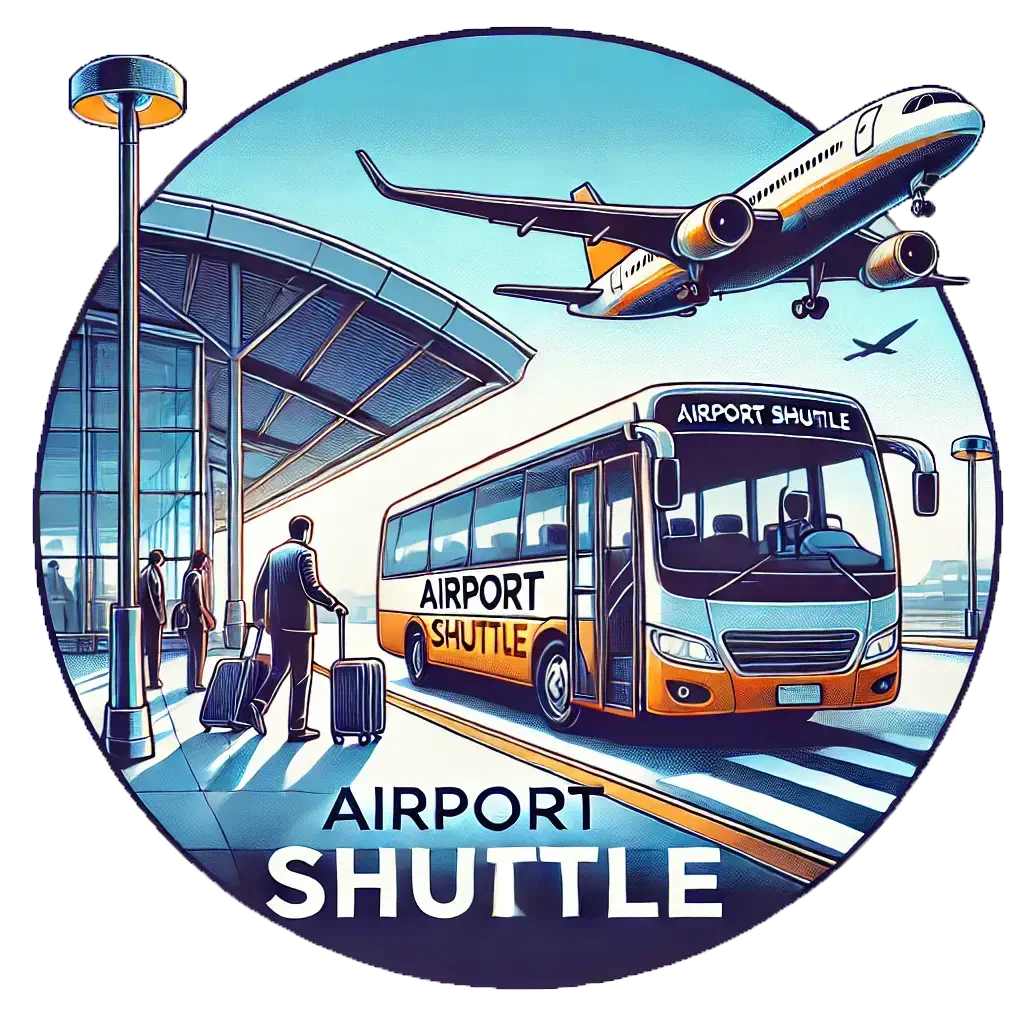
Summary: Explore Tenerife on TITSA buses
Using public transportation in Tenerife, particularly TITSA buses, offers travelers a convenient and cost-effective way to explore the island. With a wide network of routes covering both key tourist destinations and secluded corners, TITSA buses make a wide variety of attractions accessible.
The benefits of using the buses include not only reduced transportation costs, but also the ability to enjoy the island’s scenery without the distraction of driving. By planning their route in advance and using available technological solutions such as the Ten+ Móvil mobile app, travelers can make the most of their time in Tenerife.
It is also important to highlight TITSA’s contribution to sustainable transportation, including through the use of electric and eco-friendly buses, which supports the environmental sustainability of the region.
We hope that this guide will help you in planning your Tenerife trip, making it as pleasant and comfortable as possible. Discover the beauty of Tenerife with TITSA – convenient, affordable and eco-oriented.

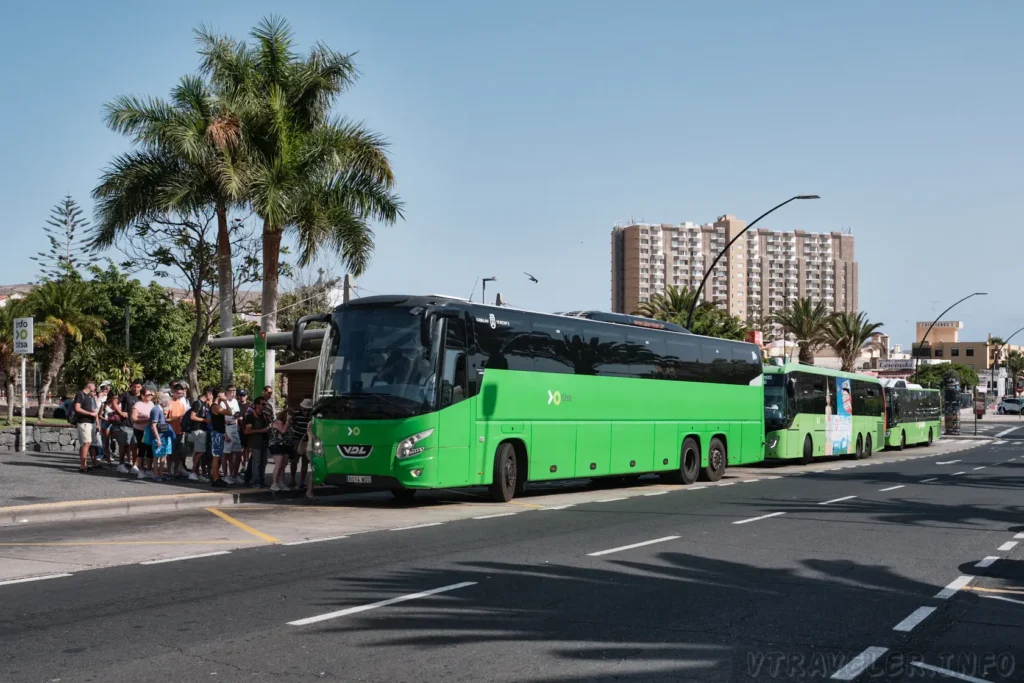
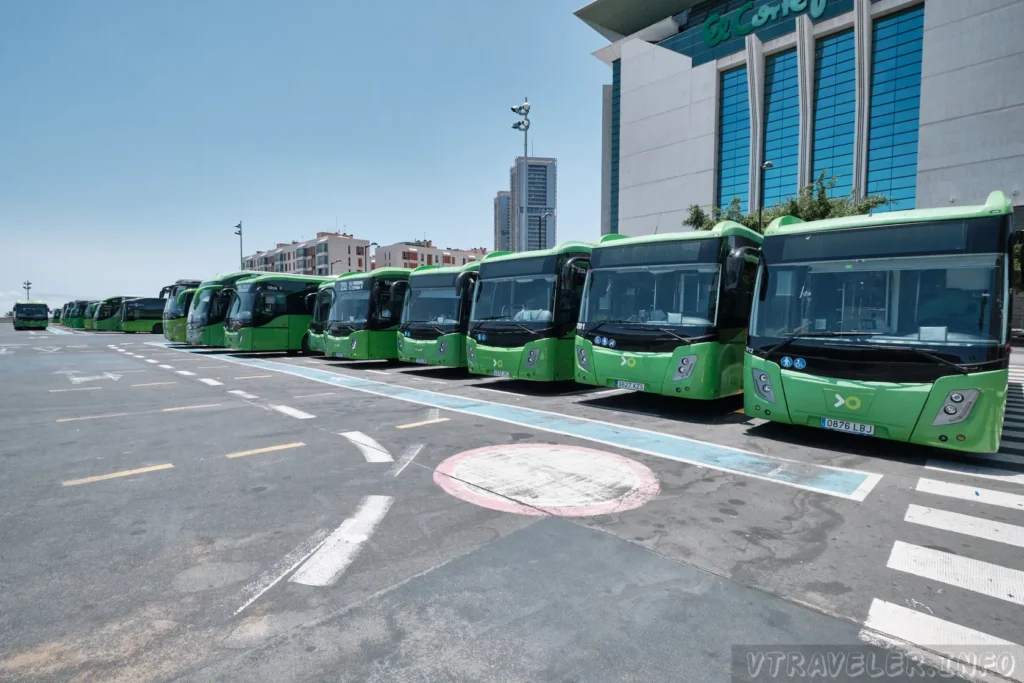
- Web Site: Titsa
- Phone: (+34) 922 531 300 (08:00 – 20:00)
Ferries
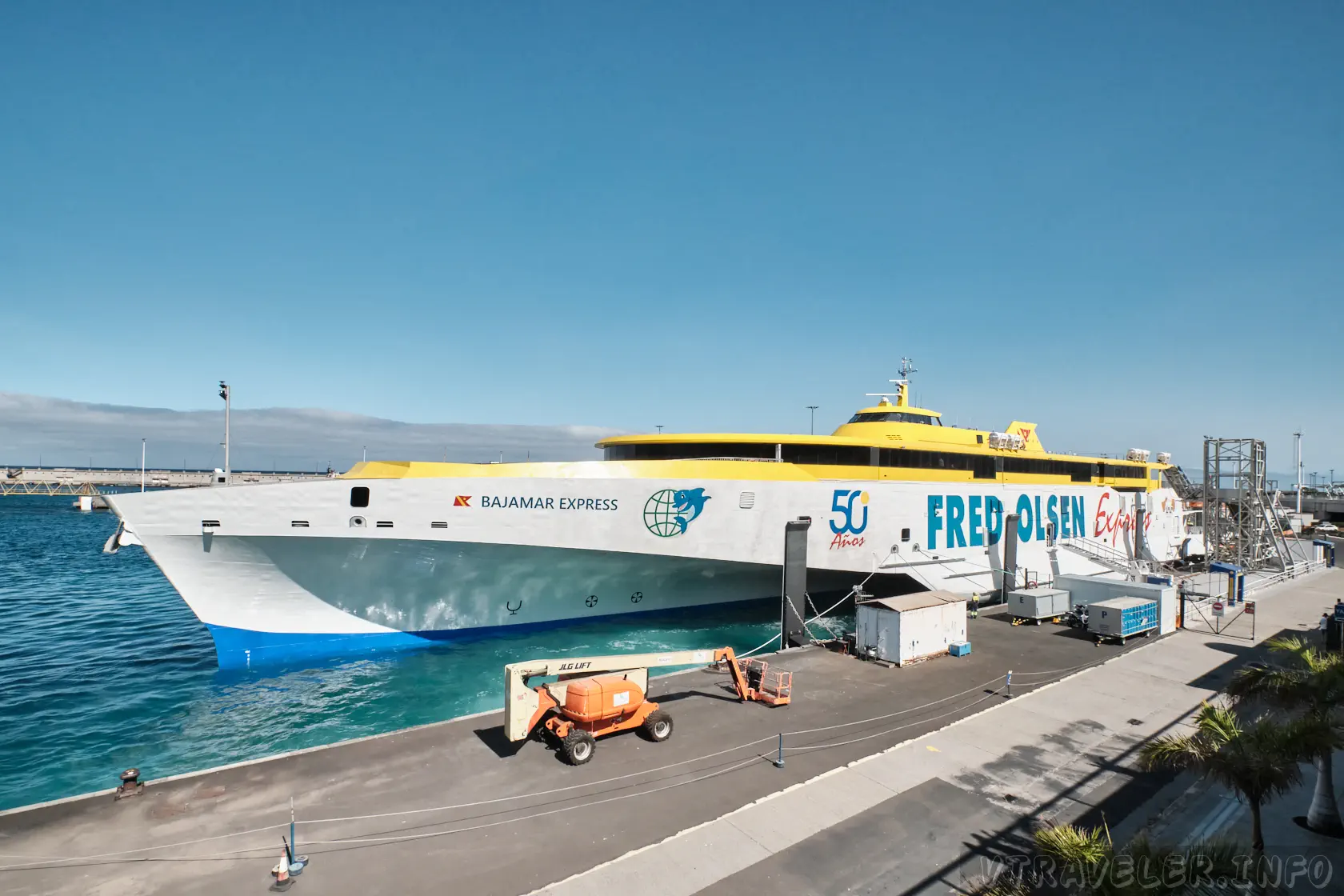
Introduction
Ferry services play a key role in Tenerife’s transportation infrastructure, providing not only links between different parts of the archipelago, but also connecting the island to the Spanish mainland. This mode of transportation provides both tourists and locals with a convenient and cost-effective way to travel, allowing them to enjoy the scenic views of the Atlantic Ocean during the crossing. In this article, we will look at the main ferry companies, routes and services available in Tenerife, as well as providing useful tips and advice on planning your ferry journey. Covering all aspects of ferry travel will help travelers to better prepare for their upcoming trips and choose the most suitable option for their needs.
History of ferry lines in Tenerife
The history of ferry transportation in Tenerife dates back to the early 20th century, when the first sea routes between the islands of the Canary archipelago were established. Since then, ferry lines have been an integral part of island life, providing essential links for the economy and tourism. The development of technology and the increase in tourist traffic has led to the modernization of the fleet and the improvement of port infrastructure. An important milestone was the introduction of high-speed ferries, which significantly reduced travel time between the islands. Today, companies such as Fred. Olsen Express and Naviera Armas, offer regular and comfortable voyages, combining historical seafaring traditions with modern technology and service.
Major ferry operators and their routes in Tenerife
Two leading operators stand out in the Tenerife ferry market: Fred. Olsen Express and Naviera Armas, each offering unique services and routes tailored to the needs of both locals and tourists.
- Fred. Olsen Express:
- Specialization: The company has established itself in the field of fast and comfortable transportation through the use of modern high-speed ferries.
- Main routes: Covers key destinations between Tenerife and other islands in the archipelago including Gran Canaria, La Palma and El Hierro, giving passengers the opportunity to enjoy short and pleasant journeys.
- Technological innovations: Fred. Olsen Express is actively introducing: advanced technologies to improve the comfort and safety of its services, making ferry travel even more attractive.
- Naviera Armas:
- Safety and versatility: This operator is known for its emphasis on safety and comfort, providing reliable and convenient services for a wide range of passengers.
- Route Network: Offers routes connecting Tenerife to Las Palmas and other ports in the Canary Islands, as well as routes to mainland Spain.
- Additional services: Naviera Armas stands out with its vehicle and cargo transportation offer, making it the preferred choice for business needs and individual travel with cars.
Both operators play a key role in strengthening the transportation infrastructure between the islands and contribute to the sustainable development of tourism in Tenerife. Their services are of high quality and reliability, making them an important part of life on the island.
Tenerife ferry booking process
Booking Tenerife ferry tickets is a simple and affordable process that can be done either online or through physical outlets. Below are the key steps and booking options that will meet the needs of different categories of passengers:
- Online booking:
- Websites: Most ferry companies such as Fred. Olsen Express and Naviera Armas, offer user-friendly web-based booking platforms. Users can easily select the route, date and ticket type from the homepage.
- Mobile apps: Some operators offer mobile apps that allow you to book tickets, track schedules and receive notifications of flight changes.
- Payment: Online ticket payments can be made using a variety of payment methods including credit cards, e-wallets and direct bank transfers.
- Booking through points of sale:
- Travel Agencies: Passengers can visit local travel agencies where professionals can help them choose a suitable itinerary and issue tickets.
- Port ticket offices: Tenerife ports have ticket offices where you can buy your ticket just before boarding. This option is suitable for those who prefer to buy tickets at the last minute.
- Additional tips for booking:
- Early booking: It is recommended to book tickets in advance, especially during peak tourist season to ensure availability and best prices.
- Price comparison: Use online price comparison services to find the best deals and special promotions from different operators.
The Tenerife ferry booking process offers flexibility and convenience to meet today’s passenger demands. This makes planning trips on the island even more affordable and enjoyable.
Tips for ferry travelers
Traveling by ferry can be one of the most enjoyable ways to move around the Canary Islands if you prepare in advance and follow a few simple tips:
- Travel Preparation:
- Tickets and documents: Make sure you have all the necessary documents including tickets, passport (for international routes) and insurance. It is advisable to print your tickets or save them electronically.
- Hand luggage: Limit your hand luggage to the required minimum for ease of movement on the ferry. It is important to bring sunglasses, hats and sun protection, especially in summer.
- Aboard the ferry:
- Safety: Follow staff instructions and pay attention to safety information, especially if traveling with children.
- Facilities: Make use of the facilities on offer, such as cafes or lounge areas. Many ferries have Wi-Fi, making the trip more comfortable.
- Deck: Don’t miss the opportunity to go out on deck to enjoy the views. However, keep an eye on the weather conditions and wear suitable clothing.
- Special Services:
- For passengers with disabilities: Most ferries are equipped for the convenience of passengers with disabilities. Please check availability when making your reservation.
- Pet transportation: If you are traveling with a pet, make sure you are aware of the pet transportation regulations and have all necessary documents and supplies ready.
- Post-trip:
- Evaluate the experience: After the trip is over, don’t forget to evaluate the quality of service and, if you wish, leave a review to help other passengers with the best service.
These tips will help make your Tenerife ferry trip more comfortable and safer. By planning your trip in advance and following these tips, you can avoid common misunderstandings and make your trip unforgettable.
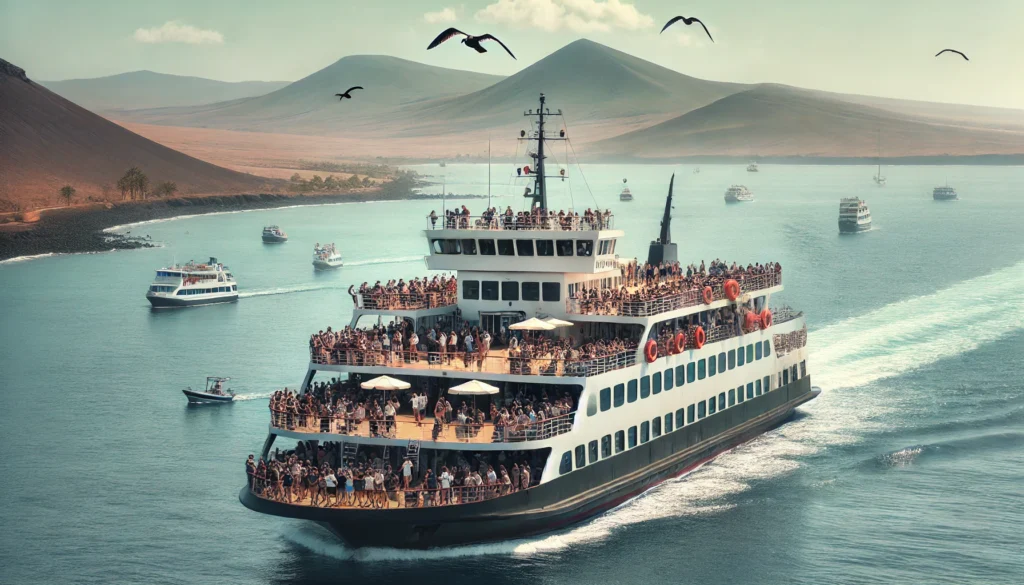
La Gomera Island Excursion Tour
La Gomera is an island with unique natural attractions that offers visitors to explore its picturesque landscapes and cultural heritage. One of the main places to visit is the Garajonay National Park, a UNESCO World Heritage Site. Here, one can see the ancient laurisilva forest, which is shrouded in mist and is a relic of the Tertiary period. In addition, tourists can visit the local Ethnographic Park “La Gomera”, which allows you to learn about the traditional crafts and culture of the island, including the unique Silbo whistling language, recognized by UNESCO as an intangible cultural heritage.
La Palma Island Excursion Tour
La Palma attracts tourists with its spectacular volcanic landscapes and astronomical observatories. The island’s main attraction is the Caldera de Taburiente National Park, which offers spectacular hiking trails among canyons, waterfalls and secluded lagoons. Visitors can also tour one of the world’s most famous observatories, the Roche de los Muchachos, which houses telescopes that study the starry skies over the island. In addition, the town of Santa Cruz de la Palma impresses with its colonial architecture and cozy streets that invite you to enjoy the local cuisine and hospitality of the inhabitants.
The main ports of departure in Tenerife are Santa Cruz de Tenerife and Los Cristianos

In Tenerife, ferry routes to other parts of the Canary Islands are served exclusively through two main ports: the port in Santa Cruz de Tenerife and the port in Los Cristianos. These ports are vital hubs for all ferry traffic on the island and provide regular departures to various destinations in the archipelago.
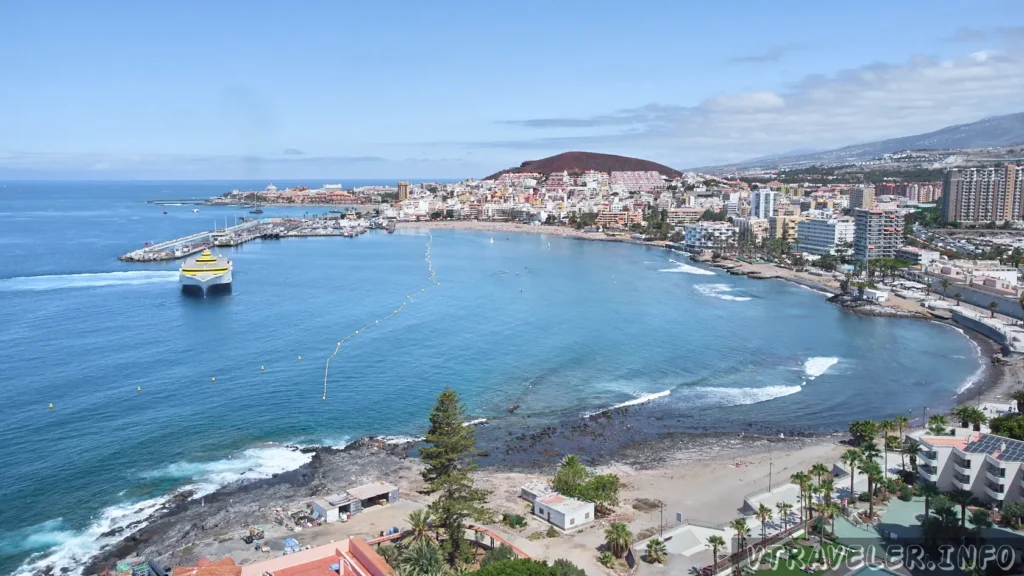
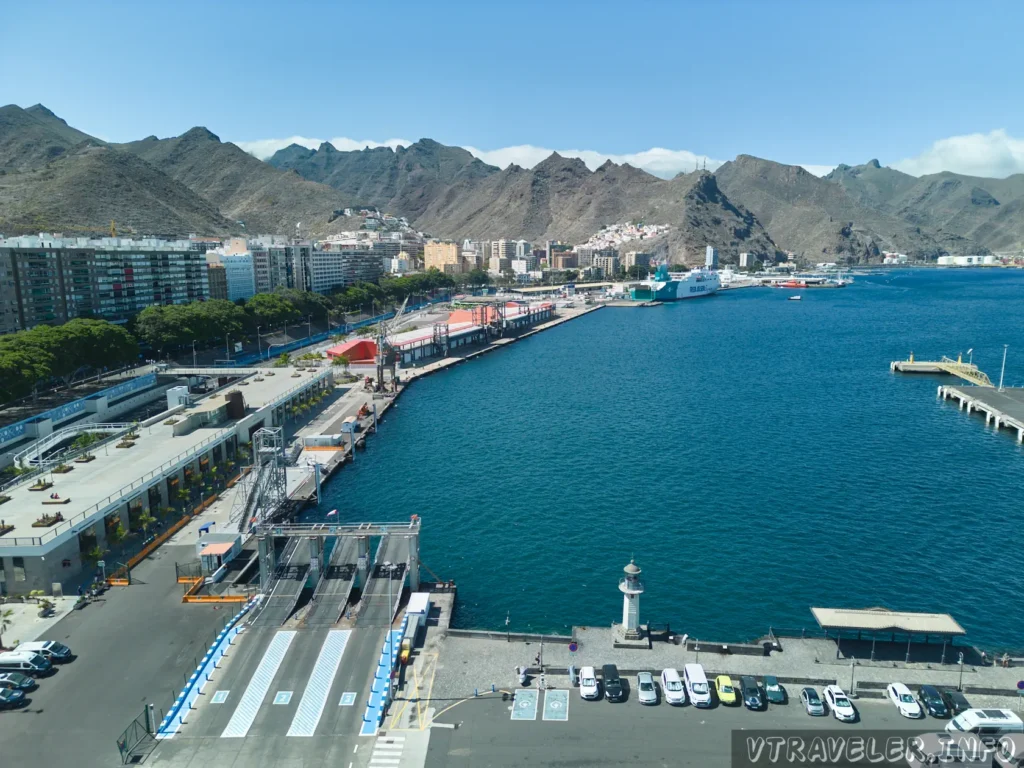
- Santa Cruz de Tenerife Port:
- Key Functions: This port is the largest transportation hub for international and domestic freight as well as passenger traffic on Tenerife.
- Infrastructure: With modern terminals and facilities, the port in Santa Cruz offers passengers a comfortable pre-trip experience, including stores, cafes and direct transportation links to the rest of the island.
- Port at Los Cristianos:
- Features: Predominantly serves passenger ferries to nearby islands such as La Gomera and La Palma.
- Accessibility and Amenities: Located close to the resort areas, the port provides tourists with easy access and the necessary amenities to comfortably begin their sea journey.
The use of these two ports for all ferry departures ensures that passengers can easily plan their trips knowing the exact departure points. These ports serve as gateways to the beauty and diversity of the Canary Islands, providing reliable and efficient routes for all travelers.
Conclusion
In conclusion, ferry services in Tenerife represent an important part of the island’s transportation system, providing both tourists and locals with a convenient and affordable way to travel between the islands and the continent. Major operators such as Fred. Olsen Express and Naviera Armas, guarantee a high level of service, safety and comfort at all stages of the journey.
- Summarizing the key points:
- Booking tickets has become easier thanks to online technology and the variety of itineraries available.
- Tips for travelers help make ferry travel more enjoyable and safer.
- Significance to the region:
- Ferry transportation promotes tourism and strengthens economic ties between the islands.
- Call to Action:
- If you’re planning a trip to Tenerife, consider using the ferry as an alternative travel option to explore the archipelago’s picturesque islands. Visit the official websites of Fred. Olsen Express and Naviera Armas for more information and reservations.
Ferries to Tenerife not only provide reliable and comfortable travel between the islands, but also offer a unique opportunity to enjoy the beauty of the surrounding seascape. Whether you are traveling alone, with family or friends, Tenerife ferries promise to be one of the most memorable experiences of your trip.
- Naviera Armas
- Phone: 910 109 882
- E-mail: atencionalcliente@artra.es
- Fred. Olsen Express
- Phone: 922 290 070 – 928 290 070 (08:00 – 20:00)
- E-mail: agencias@fredolsen.es
Trams
Introduction
Tenerife, the largest of the Canary Islands, is known for its spectacular scenery and rich cultural life. However, an equally significant part of its infrastructure is its modern trams, providing convenient and accessible transportation for locals and tourists alike. In this article, we will take a look at Tenerife’s unique streetcar system, from its history to its current state and future plans. We will delve into the environmental and economic benefits that the streetcar offers, exploring how this particular mode of transportation has transformed urban life on the island. Read more about how trams help preserve cultural heritage while promoting sustainable development in our review.

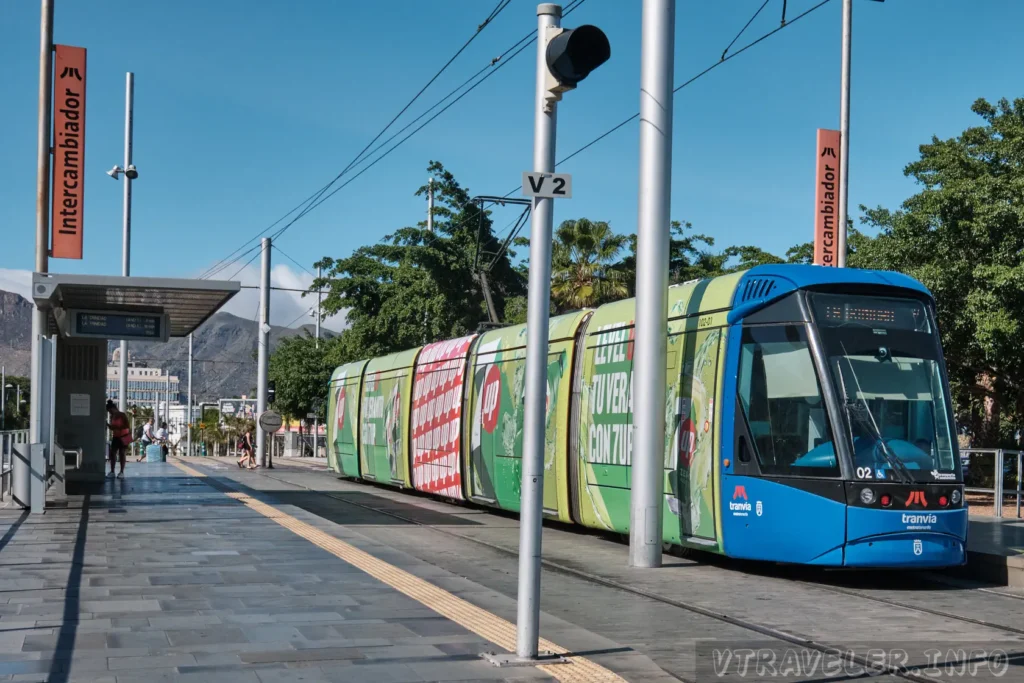
History of trams in Tenerife
The history of trams in Tenerife dates back to the early 20th century, when the need for a reliable and efficient transportation system became evident as the island’s population and tourist appeal grew. The first streetcar lines were launched in 1901, which greatly improved the mobility of residents and promoted the development of urban areas. These early trams, originally run on steam traction, were later upgraded to use electric traction, highlighting the island’s technological advancement. Over the following decades, the streetcar network expanded and their role in Tenerife’s urban landscape was strengthened, embodying the pursuit of excellence and innovation in public transportation.
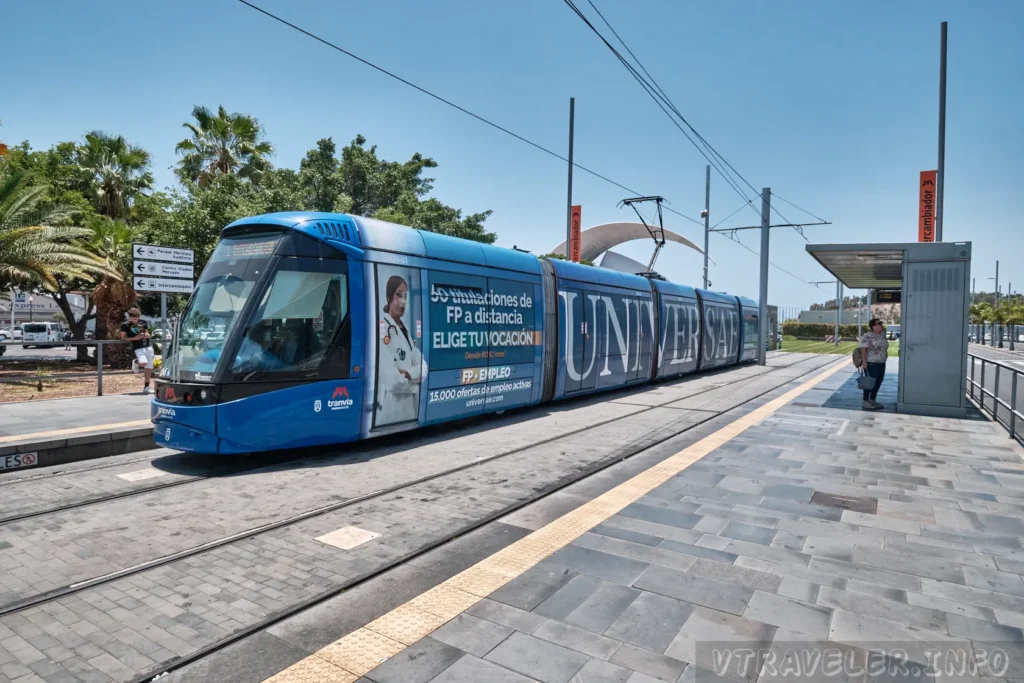
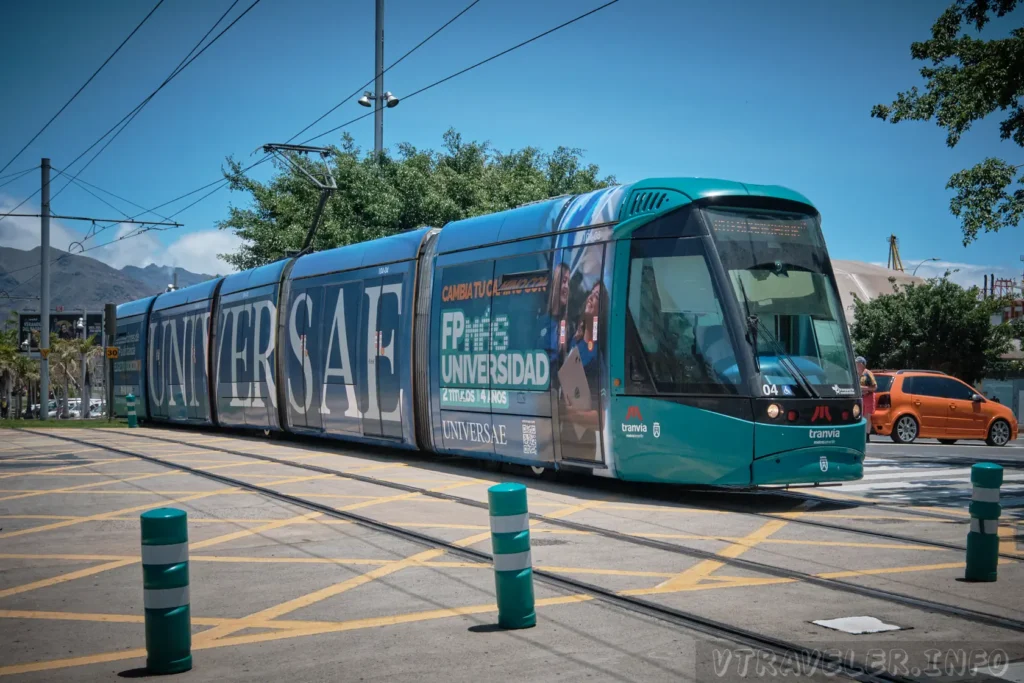
Modern trams
Tenerife’s modern streetcar system is a prime example of an innovative approach to public transportation. Launched in 2007, the network comprises two main lines that link the capital Santa Cruz with the university town of La Laguna, serving more than 15 million passengers annually. The trams are equipped with state-of-the-art technology for comfort and safety, including electronic fare payment systems and real-time schedule information. Through the use of electricity, Tenerife’s trams contribute to reducing the carbon footprint, supporting the island’s environmental sustainability. The efficiency and accessibility of modern trams greatly improves the quality of life for residents and the ease of travel for tourists.
Route of streetcar lines on the map
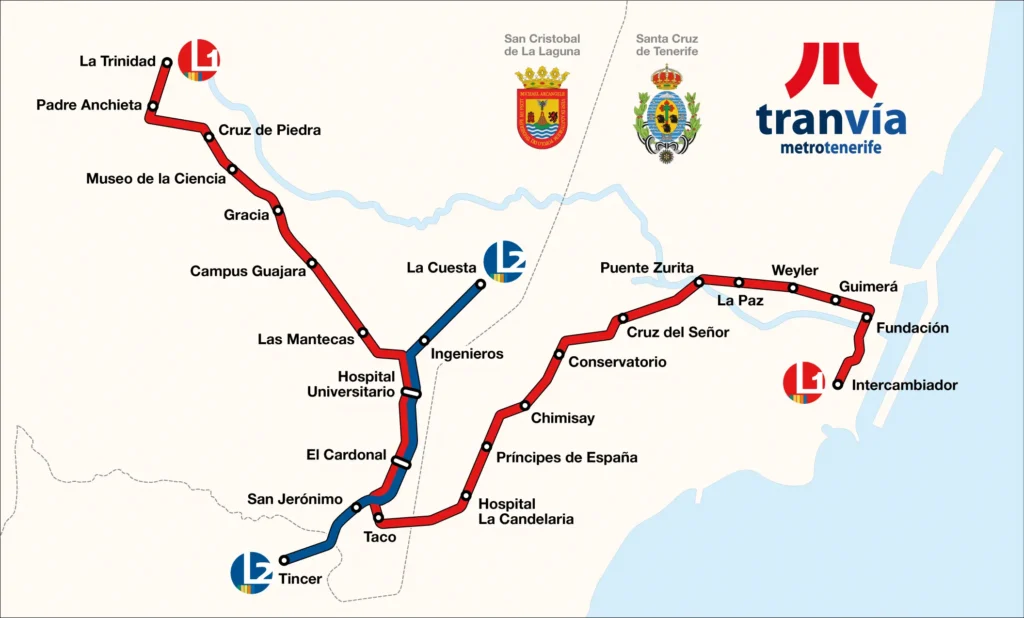
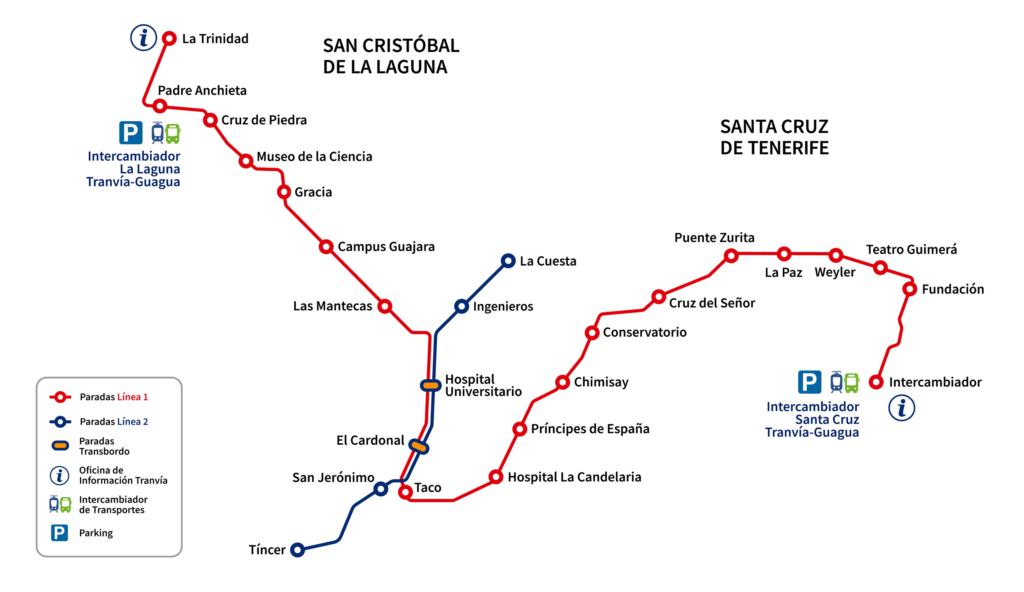
Payment, fares
In Tenerife, the streetcar fare system is closely integrated with the bus system, making it easier for locals and tourists alike to use public transportation. Passengers can use a single ticket that is valid on both trams and buses, making transfers easier and reducing overall transportation costs. Streetcar fares vary depending on the length of the route and the fare selected, but generally remain affordable, with the aim of encouraging the use of public transportation. Monthly and annual passes are available for regular passengers, which offer unlimited rides at a more favorable price. These season tickets can be purchased via a mobile app or at specialized terminals, making the purchase process convenient and fast. This integrated payment system supports the sustainable development of Tenerife’s transportation infrastructure and contributes to improving the island’s environmental situation.

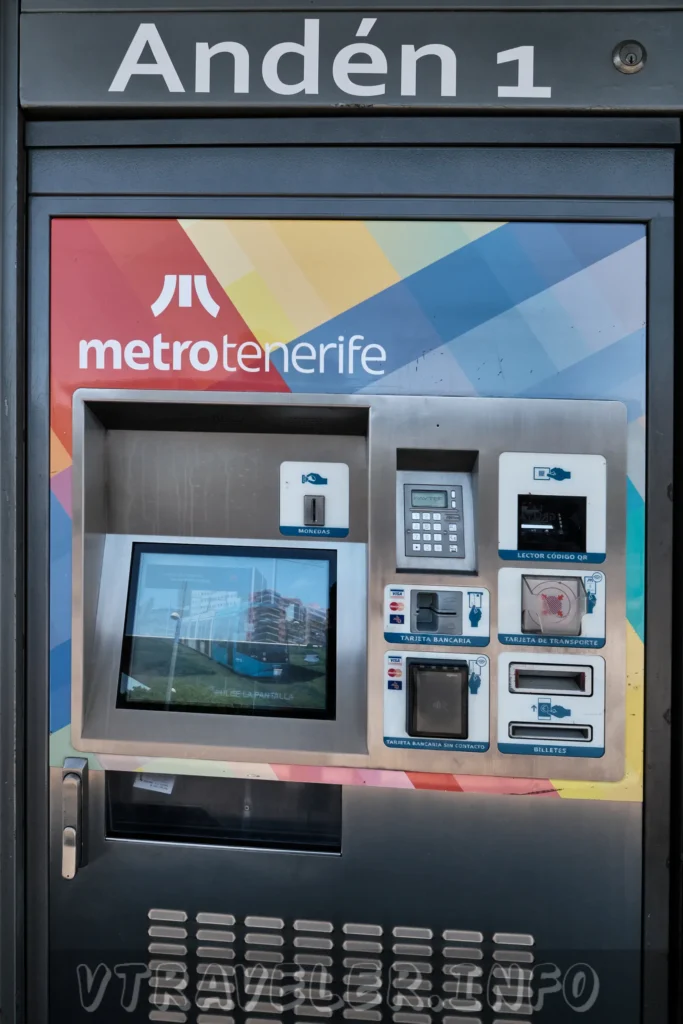
Benefits of streetcar transportation
Tenerife streetcar transportation has many advantages that make it one of the best choices for getting around the island for locals and tourists alike. Firstly, Tenerife trams are an environmentally friendly mode of transportation, significantly reducing carbon dioxide and other pollutants in the atmosphere, which helps to improve air quality and keep the island’s landscapes clean. Secondly, due to their high frequency of service and accessibility, trams are convenient to use and contribute to reducing urban congestion, easing traffic congestion. In addition, trams contribute to improving transportation infrastructure and accessibility to key facilities on the island, increasing Tenerife’s tourist appeal and economic development. These factors make the streetcar not only economically beneficial, but also a strategically important element in the overall urban planning framework.
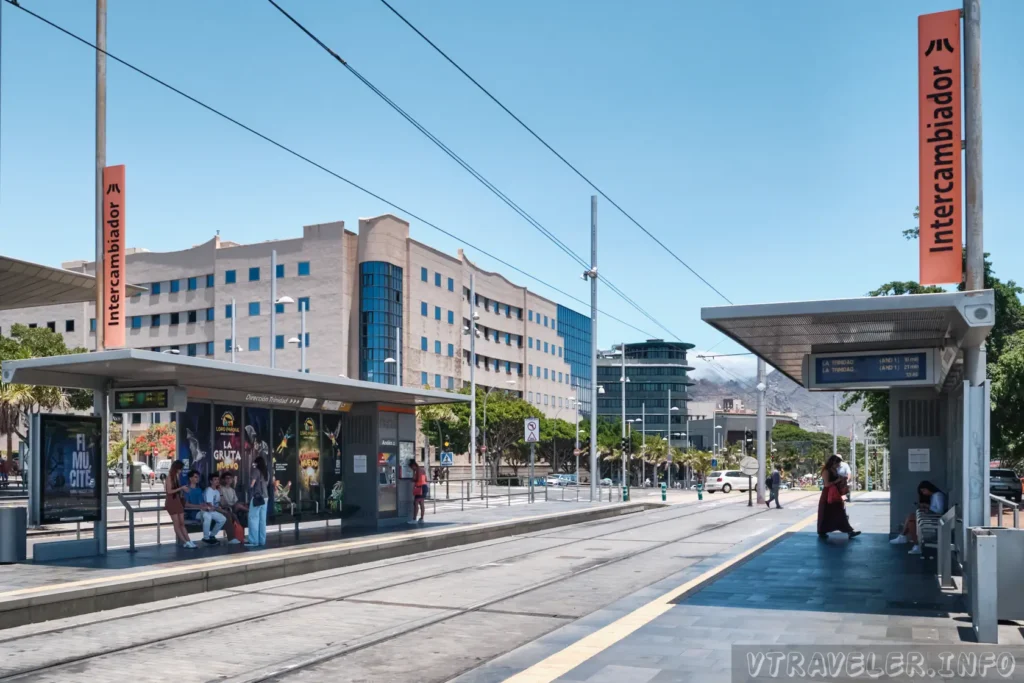
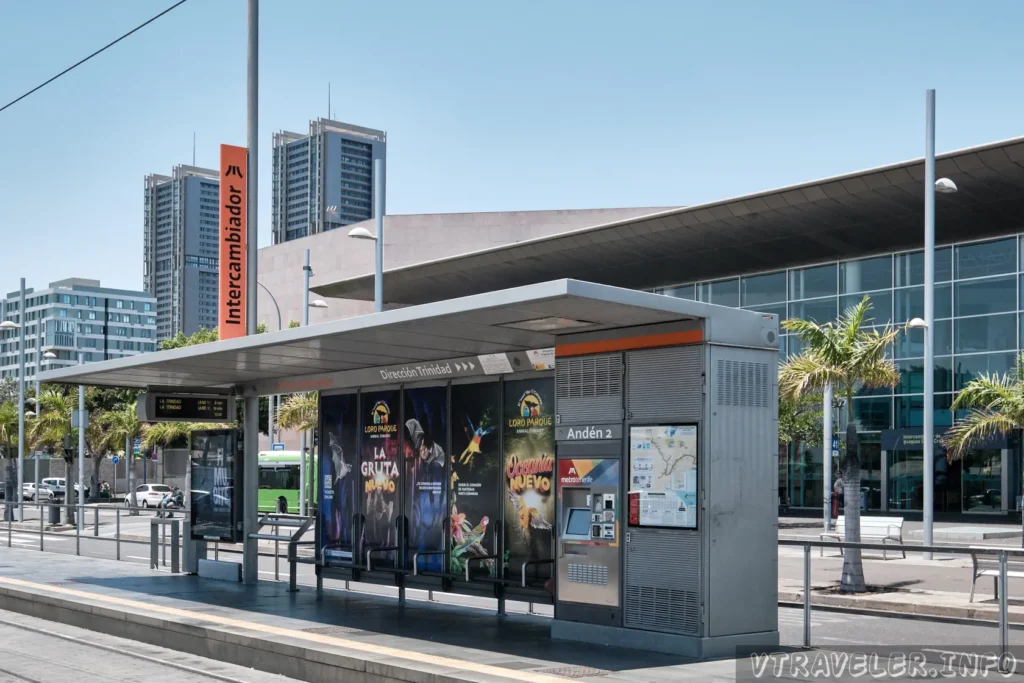
Future plans and development
The Tenerife authorities are actively working on the further development of the streetcar system, aiming to expand the network and improve its efficiency in response to the growing transportation needs of the island. New lines are planned to connect additional areas of the island to the existing network, improving accessibility and reducing travel times for millions of passengers. There are also plans to introduce advanced technologies, such as smart transportation systems, that will improve passenger safety and comfort. These measures involve not only improved streetcar transportation services, but also a significant impact on environmental sustainability, supporting the island’s sustainable development and environmental protection goals.
Conclusion
In conclusion, Tenerife’s streetcar system not only provides efficient and convenient transportation around the island, but also plays a key role in maintaining the ecological balance and improving the quality of life of its inhabitants. Through continuous improvements and expansion plans, trams are becoming not just part of the transportation infrastructure, but a significant factor in developing sustainable tourism and strengthening Tenerife’s economy. We encourage everyone visiting this picturesque island to take advantage of the convenience and comfort of streetcar transportation to experience the benefits first-hand. Explore Tenerife with its modern and innovative streetcar network, a journey that promises to be not only comfortable but also unforgettable.
- Metrotenerife
- 922 099 119 / 900 906 545

